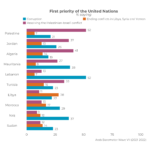COVID-19 has disrupted livelihoods and economies across the world, changing consumption patterns of all different types of products and services, including digital media. The Arab World is no exception, though perhaps the transformation in digital media consumption has been accelerated by the pandemic outbreak. The Arab world has witnessed a steady increase in both internet usage and social media penetration, as well as increasing reliance on social media for breaking news.
According to Arab Barometer Wave 6 – Survey 1 data, overwhelming majorities of citizens in Jordan, Lebanon, Tunisia, Algeria and Morocco use the internet at least once a day. Lebanon and Jordan lead the group figures with almost 9 in 10 reporting daily internet usage. Algeria is slightly lower, with almost 3 in 4 reporting daily internet usage and about 2 of 3 reporting daily usage in Morocco and Tunisia.
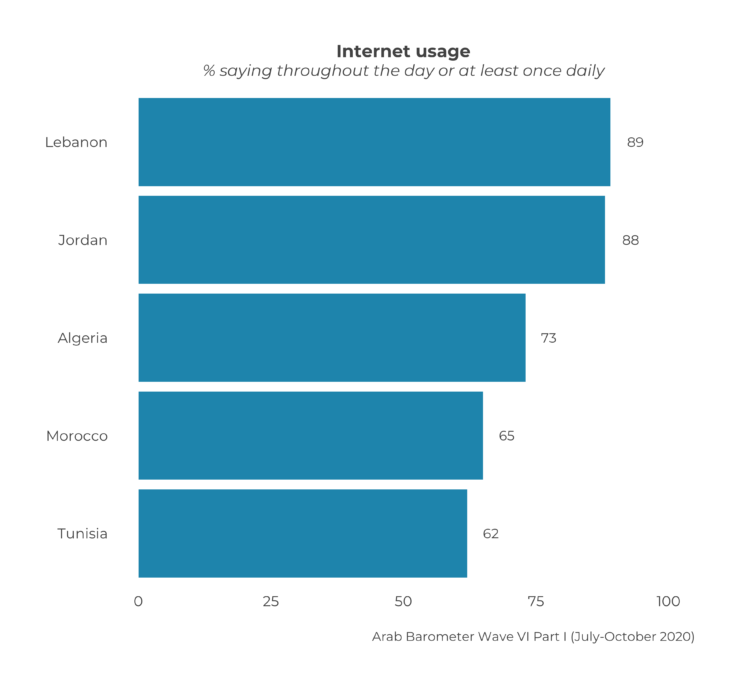
The largest gaps in usage are (unsurprisingly) between young people and older segments. Among countries surveyed, the largest gap in usage with respect to age is in Tunisia, where 91 percent of those aged 18-29 report using the internet at least once daily compared to 51 percent of those aged 30 and over.
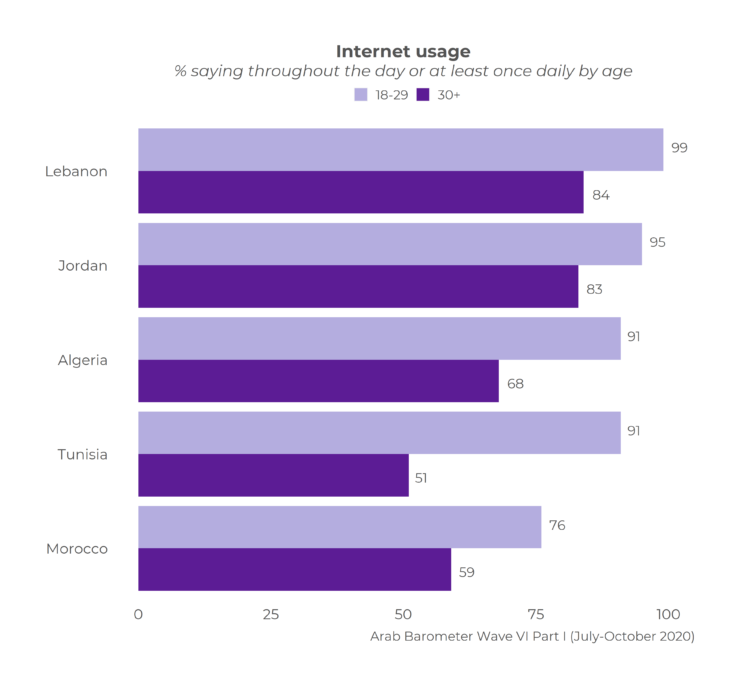
Those with higher education also tend to report using the internet much more than those with secondary education or lower. The largest age gap in usage with respect to education is in Morocco, where 91 percent of those with higher education report using the internet at least once daily compared to 56 percent of those with secondary education or less.
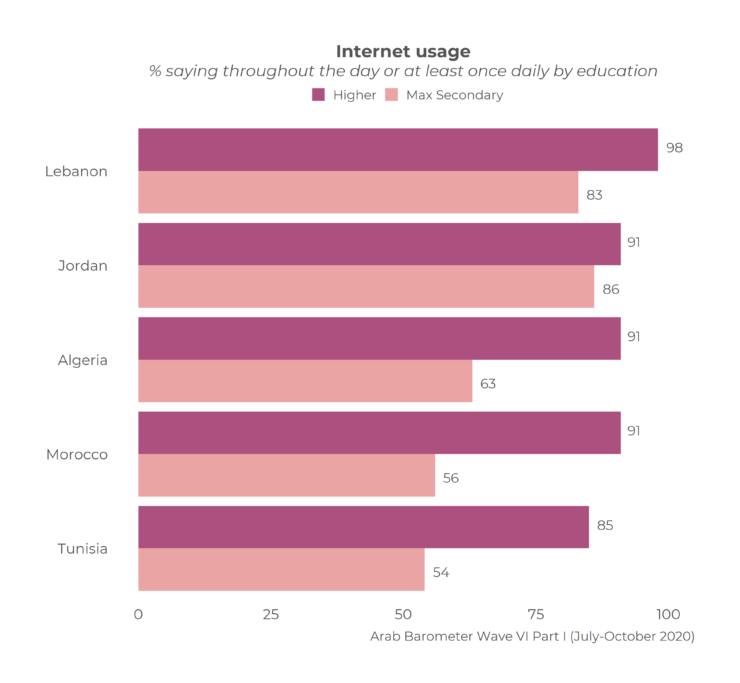
At the same time, social media is increasingly becoming the main source Arab citizens use to learn about breaking news. According to Arab Barometer Wave 6 – Survey 1 data, Jordan leads the way in this regard with 52 percent of respondents saying they use social media as their primary source for breaking news. Lebanon and Algeria follow with 43 percent for each, and Tunisia and Morocco round up the list with 36 percent for each. Thus, a third to a half of citizens in each country use social media as their primary source for breaking news.
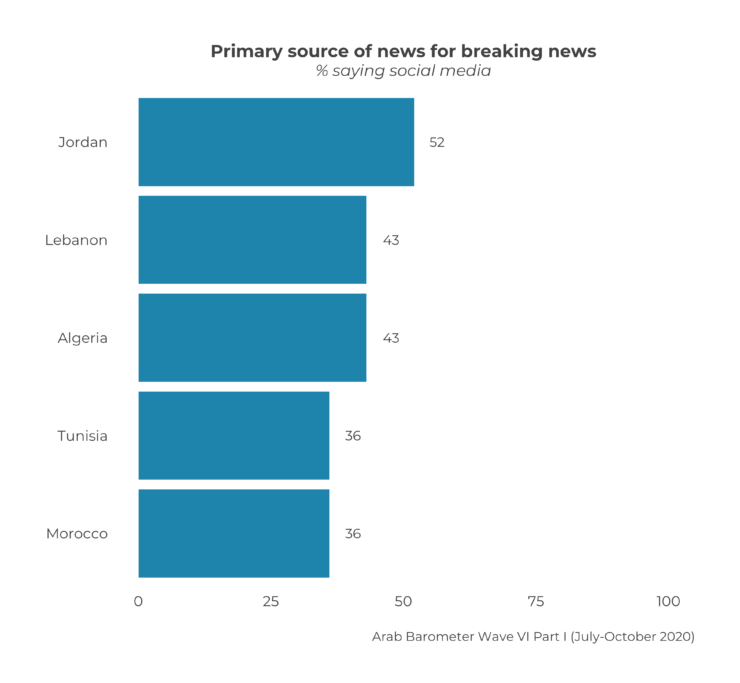
Here again, the largest demographic differences are between young people and older segments. The largest gap with respect to age is in Algeria, where 71 percent of those aged 18-29 report using social media as their primary source for breaking news compared to 34 percent of those aged 30 and over.
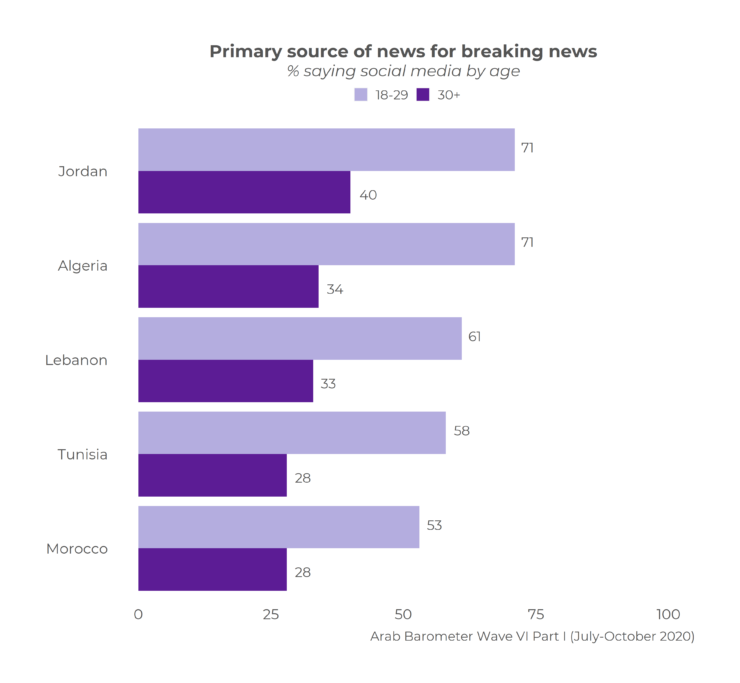
Those with higher education also tend to report using social media as their primary source of breaking news much more than those with secondary education or lower. The largest age gap with respect to education is also in Morocco, where 60 percent of those with higher education report using social media as their primary source for breaking news compared to 27 percent of those with secondary education or less.
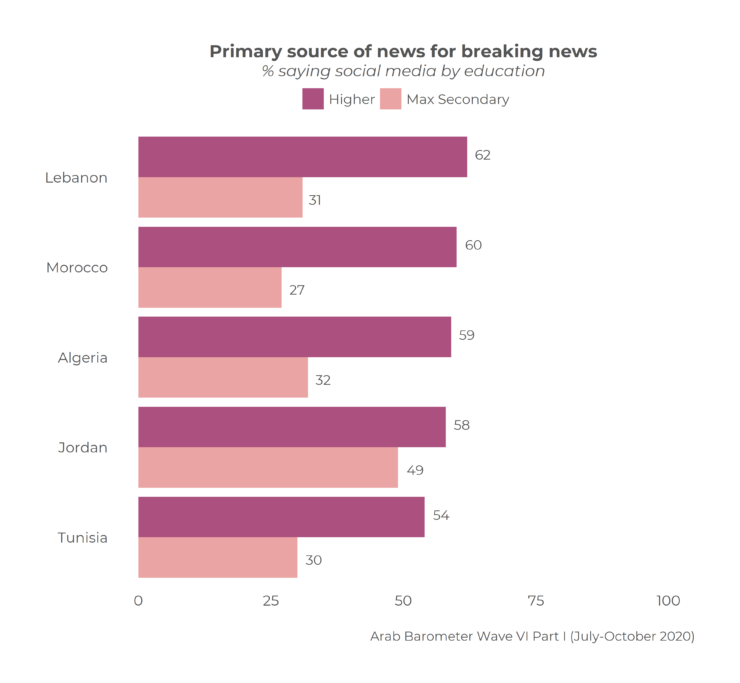
At a cursory level, the results point to the evolution of the regional digital divide. While shrinking in absolute terms, the divide is not so much about disparities in income and gender and increasingly about variations in age and education (which admittedly, intersects with income and class).


